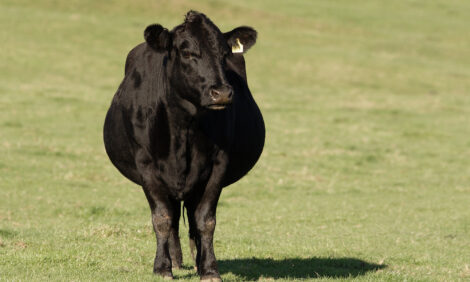



NZ Beef - Actions to Reduce GHG Emissions
Following on from the New Zealand Beef Greenhouse Gas Footprint Study, the authors outline future actions and recommendations for the industry. The study confirmed several areas where the New Zealand red meat sector can continue to make incremental improvements in its emissions performance. There are also longer-term strategic research initiatives underway, which are intended to produce more significant, step-wise improvements in emissions performance.Overall Findings
The total GHG footprint was calculated at 2.2kg CO2-equivalents for a 100g portion of
beef. Broken into segments, this equates to 90.3% for the on-farm stage, 2.1% for meat
processing, 4.2% for transportation, and 3.3% for the consumption phase.
This overall breakdown of the GHG footprint and the dominance of the on-farm
component is broadly consistent with the recently completed New Zealand Lamb GHG
Footprint Study and other international studies of products derived from farmed,
ruminant livestock.
Key components of the beef GHG footprint are as follows:

On Farm
On farm, the largest contributors to emissions are natural processes associated with
cattle consuming pasture. These processes include methane from rumen digestion of
pasture (via belching, 62% of total footprint) and nitrous oxide from animal excreta on
soil (17% of total footprint).
While on-farm emissions are the most significant contributor to the GHG footprint, they
also present the most difficult challenge in terms of improvements. However, it is possible to reduce the on-farm portion of the footprint through management practices
that increase the conversion of pasture to meat. This, in turn, reduces the proportion of
pasture consumed to “maintain” the herd.
Meat Processing
Meat processing comprises only 2.1% of the beef GHG footprint, but the study identifies opportunities for meat processors to reduce this contribution further, particularly in relation to energy used for processing and wastewater management. Meat processors are addressing these challenges through improved wastewater treatment systems, energy efficiency programmes and exploration of alternative fuels for boilers.
Transportation
Oceanic shipping of meat in refrigerated containers from New Zealand to overseas markets (based on the relative global distribution), made up nearly 2.6% of the total GHG footprint. Oceanic shipping represents 61% of the overall commercial transportation and storage contribution to the total footprint. While this reinforces that food transportation is not a key determinant of the overall footprint, meat exporters are working with shipping lines to reduce this contribution.
Consumption
The consumption-related components account for approximately 3.3% of the total of the GHG footprint (increasing to 14.5% if travel to and from the restaurant is included). This highlights that the consumer also plays a role in reducing beef’s GHG footprint.
Further Steps
Action being undertaken to reduce GHGs include:
Continuous Improvement
Across the beef supply chain, farmers, processors and shippers will continue to prioritise efficiency and improved environmental performance.
Strategic Emissions Reduction Initiatives
New Zealand’s meat industry and government are investing heavily to identify innovations capable of significantly reducing pastoral farming GHG emissions. These strategic efforts are focused on research and development to create mitigation technologies. They include the minimisation of methane from enteric fermentation, through breeding or vaccines, and the reduction of nitrous oxide emissions, through soil additives and nitrogen management practices.
Global Coordination of Emissions Measurement
The New Zealand industry and government are working to coordinate global efforts to
understand agricultural GHG emissions. One aspect of this is to share the methodology
applied in this and other GHG footprinting studies, thereby allowing agricultural
producers around the world to compare and discuss emissions mitigation opportunities
on a like-for-like basis.
The New Zealand meat industry’s participants plan to continue working together to
mitigate emissions throughout the supply chain and to measure overall progress.
Mitigation efforts will also be encouraged by the implementation of the New Zealand
Emissions Trading Scheme (ETS), which puts a price on GHG emissions.
Industry participants will continue to meet and discuss emissions reduction
opportunities. The industry plans to repeat this study in the future, to measure its
progress in reducing the GHG footprint of exported New Zealand beef.
Further ReadingYou can view the full report by clicking here. |
October 2012


